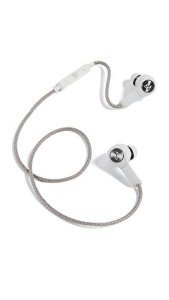
Headphones Price
Add a review FollowOverview
-
Founded Date May 31, 1910
-
Sectors General Labour
-
Posted Jobs 0
-
Viewed 130
Company Description
10 Apps That Can Help You Manage Your Headphones
The Evolution and Innovation of Headphones: A Comprehensive Guide
Headphones have changed from primary audio gadgets into advanced gadgets that mix technology with individual listening preferences. As a staple in modern-day sound experiences, headphones can be found in numerous styles, technologies, and specs, catering to varied audiences– from casual listeners to audiophiles and professionals. This short article checks out the development of headphones, their types, essential technological improvements, best practices for use, and responses to often asked questions.
A Brief History of Headphones
The origins of headphones can be traced back to the late 19th century when they were created to help wire operators send and get messages more effectively. Over the decades, the style and performance of headphones have developed incredibly.
| Year | Turning point |
|---|---|
| 1910 | First stereo headphones are developed. |
| 1958 | John C. Koss creates the first open-back headphones. |
| 1980 | The Walkman popularizes portable headphone use. |
| 2000s | Rise of in-ear headphones and Bluetooth innovation. |
| 2020s | Introduction of noise-cancellation and clever headphones. |
The shift from bulky styles to compact and ergonomic designs highlights the industry’s adaptability to consumer requirements and technological improvements.
Types of Headphones
Headphones can be classified into numerous types, each offering unique functions and advantages. Below are the main kinds of headphones offered in the market:
1. Over-Ear Headphones
- Meaning: These headphones fully cover the ears with cushioned ear cups.
- Benefits:
- Superior sound quality
- Boosted noise seclusion
- Comfy for long-term wear
- Disadvantages:
- Bulky and not portable
- Can cause heat accumulation throughout extended usage
2. On-Ear Headphones
- Meaning: These headphones rest on the ears rather than covering them totally.
- Benefits:
- Lightweight and portable
- Typically more inexpensive
- Drawbacks:
- Less reliable at noise isolation
- Can become uncomfortable after prolonged use
3. In-Ear Earbuds
- Definition: Compact headphones that fit directly into the ear canal.
- Benefits:
- Highly portable
- Good sound quality for their size
- Drawbacks:
- May cause ear discomfort over extended use
- Cable television tangling issues unless utilizing wireless variants
4. Wireless Headphones
- Meaning: Headphones that link to audio sources through Bluetooth.
- Benefits:
- Tangle-free experience
- Convenient for movement and travel
- Drawbacks:
- Battery reliance
- Prospective connectivity problems
5. Noise-Cancelling Headphones
- Definition: Headphones equipped with technology to reduce unwanted ambient noises.
- Benefits:
- Ideal for travel and loud environments
- Permits for immersive listening experiences
- Drawbacks:
- Typically more pricey
- May require battery power for ideal performance
Key Technological Advancements
The headphone market has actually experienced considerable technological improvements that enhance user experiences and audio quality. Some notable innovations consist of:
- Bluetooth Technology: This has actually reinvented headphone connectivity, headphonesshop.Uk providing seamless integration with mobile phones and other gadgets.
- Active Noise Cancellation (ANC): Advanced algorithms enable headphones to detect and counteract external sound, using listeners an undisturbed audio experience.
- Voice Assistant Integration: Many contemporary headphones support voice assistants, enabling hands-free operation and clever home control.
- Outstanding Battery Life: Enhanced battery technology has actually caused longer playtime and faster charging abilities.
Tips for Choosing the Right Headphones
Picking the best set of headphones can be an overwhelming task offered the variety of alternatives available. Here are some pointers to help simplify the process:
- Identify Usage Needs: Determine where and how you will use headphones (e.g., commuting, workout, home listening).
- Consider Audio Quality: For audiophiles, look for headphones with high impedance for superior sound efficiency.
- Examine Comfort Levels: Try on various styles to make sure an appropriate fit, specifically if you plan to use them for extended periods.
- Assess Noise Isolation Features: If you frequently use headphones in loud environments, think about noise-cancelling alternatives.
- Examine Battery Life: For wireless headphones, longer battery life can make a considerable difference in convenience.
- Research Brand Reputation: Opt for well-reviewed brands known for quality and client service.
Upkeep and Care for Headphones
To ensure longevity and optimal efficiency, it is necessary to look after your headphones correctly. Consider the following practices:

- Store headphones in a protective case to prevent damage.
- Frequently tidy ear cups and ear suggestions to remove dirt and germs.
- Prevent exposing headphones to severe temperature levels or wetness.
- Deal with the cord carefully to avoid fraying if using wired headphones.
Frequently Asked Questions (FAQs)
Q1: What is the distinction between active and passive sound cancellation?A1: Active noise cancellation utilizes microphones and speakers to combat external noises, while passive noise cancellation counts on the physical design to block sound, usually through padding and seals. Q2: Can I use wired headphones wirelessly?A2: Yes, with the use of Bluetooth adapters, wiredheadphones can be converted to wireless, although this mayimpact audio quality. Q3: How do I know if my headphones are high quality?A3: Look for reviews, test them for sound clearness and convenience, and inspect the specs for develop materials and motorist size. Q4: What features must I focus on if I prepare on exercising with headphones?A4: Seek sweat-resistant designs, safe fit, and durability to stand up to extensive activity. Wireless alternatives are typically more suitable to avoid tangling. The world of headphones is expansive and continuously evolving, offering users with varied
alternatives and innovations to enhance their listening experiences. By comprehending the different types of headphones and their improvements, customers can make informed choices
that accommodate their particular needs. Whether it’s for casual listening or expert use, the perfect pair of headphones can exceptionally affect how people connect with their music, podcasts, or calls, making the journey– one of discovery and delight.

